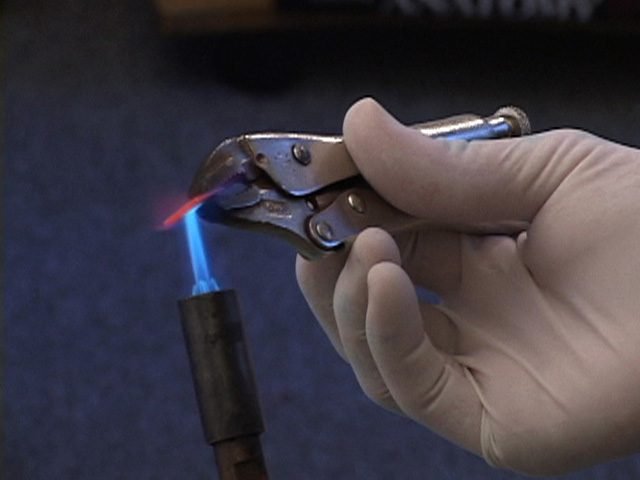
Table of Contents
Introduction to Femdom BDSM Branding
BDSM branding is a niche but significant practice within the broader BDSM community. At its core, branding involves marking the skin with a symbol or design, often using heat, to create a permanent or semi-permanent mark. While the concept of branding has historical roots in various cultures as a means of denoting ownership, status, or affiliation, its adoption in BDSM practices carries unique implications and meanings.
Historically, branding has been utilized for a multitude of purposes, from marking livestock to signify ownership to religious or tribal symbols denoting one’s status or role within a community. In the context of BDSM, branding is a form of body modification that can symbolize deep commitment, ownership, or belonging between consenting partners. It is a practice that, like many other aspects of BDSM, is built upon mutual consent, trust, and a thorough understanding of the emotional and psychological ramifications involved.
The psychological appeal of BDSM branding can be profound. For some individuals, the act of being branded by a partner can evoke a deep sense of connection and belonging. It is often considered a rite of passage or a testament to the strength of the bond between the individuals involved. The permanence of a brand can also symbolize an enduring commitment, serving as a physical manifestation of the emotional and psychological ties that bind the partners together.
Emotionally, the process of receiving a brand can be intense. It requires a high level of trust and vulnerability, as well as a clear understanding of the risks and responsibilities associated with such a practice. For many, the experience is empowering, providing a sense of identity and solidarity within the BDSM community. It is an act that goes beyond the physical, tapping into deep-seated desires and emotions that are often integral to the dynamics of BDSM relationships.
Dangers and Risks of Branding
BDSM branding, while a profound expression of commitment and trust within the dynamics of consensual power exchange, carries substantial risks that must be acknowledged and understood. Physically, branding involves inflicting burns on the skin to create permanent marks, which inherently carries the risk of severe burns that can lead to significant pain, infection, and long-term scarring. The process of creating these marks requires precise control and sterilization to prevent complications such as bacterial infections, which can result in more serious health issues if not properly managed.
Branding, simply put but not simple in action, is burning the skin’s surface to make a mark. This mark can be either temporary or permanent. The temporary kind is often referred to as a “surface burn.” A skillfully done surface burn will usually begin to fade within a few months; after a year, the most that will remain is a residual redness – depending upon the skin type. Extreme masochists love this type of play, which has no shortage of pain.
Permanent branding is quite a bit more complicated than one would expect. Most experienced branders work in 316L stainless steel sheet metal and shape it into different parts of the brand. They build their designs using sequential “strikes” of thin metal pieces to make the complete brand. Heated by a propane torch, the temperature is critical. Too hot, you can injure muscle tissue or ruin the brand with too much scarification. Too little heat, the brand will look weak. And all the strikes must be applied with equal pressure and identical heat or an uneven brand will result. To properly brand a person takes a lot of skill; we are, after all, not cattle. And remember, the results are not as predictable as tattoos; you must expect some unexpected results.
Additionally, improper aftercare can exacerbate these risks, leading to further complications. Scarring, while often intended, can vary widely in appearance and may not heal as expected, leaving the individual with unintended physical alterations. The permanence of branding means that any missteps during the procedure or in post-care can have lasting physical consequences.
Beyond the physical risks, the psychological and emotional implications of BDSM branding are equally significant. The act of branding is irreversible, and the permanence of the mark can lead to future regret or emotional distress. In some cases, individuals may experience trauma, particularly if the branding process does not go as planned or if the individual later changes their perception of the mark’s significance. The emotional weight of a permanent brand can also strain the dynamics of the relationship if one party’s feelings about the brand evolve differently over time.
Given these considerable risks, it is imperative for all parties involved to fully understand and agree to the procedure. Informed consent is crucial, ensuring that everyone involved is aware of the potential physical and emotional consequences. This agreement must be made with a clear understanding of the risks, and both parties should be prepared to handle any complications that may arise. Proper education, preparation, and aftercare are essential components in mitigating these dangers and ensuring that the experience remains safe and consensual.
Safety Precautions for BDSM Branding
Ensuring safety in BDSM branding is paramount to minimizing risks and promoting well-being. Proper preparation is essential, beginning with the selection of a sterile environment. This precaution helps to significantly reduce the likelihood of infections. The area chosen for the procedure should be thoroughly cleaned and disinfected, with all surfaces sanitized. Using clean, sanitized equipment is equally important. All tools should be sterilized before use to maintain a hygienic setting.
The role of a knowledgeable and experienced practitioner cannot be overstated. Engaging someone with expertise in BDSM branding ensures that the procedure is conducted safely and effectively. An experienced practitioner is well-versed in the nuances of branding, including the appropriate application of heat and the management of potential risks. Their expertise extends to recognizing signs of complications early and taking necessary actions to mitigate them.
Aftercare is a critical component of the branding process. Proper aftercare procedures help facilitate healing and reduce the risk of complications. Immediately following the branding, the area should be cooled to alleviate initial discomfort. Applying an antiseptic ointment can prevent infections and promote healing. It is advisable to keep the branded area clean and dry, changing dressings regularly to avoid contamination. Monitoring the site for any signs of infection, such as increased redness, swelling, or discharge, is crucial. Should any of these symptoms arise, seeking medical attention promptly is recommended.
In conclusion, the safety of BDSM branding hinges on meticulous preparation, the use of sterile equipment, skilled execution by an experienced practitioner, and diligent aftercare. By adhering to these guidelines, practitioners and participants can significantly reduce the risks associated with this practice, ensuring a safer and more satisfying experience.
How to Perform Branding
BDSM branding is a practice that requires meticulous preparation and an understanding of the various techniques involved. Two primary methods are commonly employed: hot iron branding and freeze branding. Each method comes with its own set of advantages and challenges, making it crucial to carefully choose the one that best suits your needs and comfort levels.
Hot Iron Branding: This traditional method involves heating a metal implement to a high temperature and pressing it onto the skin to create a permanent mark. The intense heat causes a burn that heals into a scar. The primary advantage of hot iron branding is the immediate visual result. However, it carries a higher risk of infection and requires more extensive aftercare. The pain level is also significantly higher, making it essential to ensure the individual undergoing the process is fully prepared and consents to the experience.
Freeze Branding: Unlike hot iron branding, freeze branding uses a supercooled metal implement, often chilled in liquid nitrogen, to damage the pigment-producing cells in the skin. This method tends to be less painful and has a lower risk of infection. The resulting mark is usually white or colorless, and its visibility can vary depending on skin tone. While freeze branding is generally considered safer, it requires a longer healing period and may not produce as pronounced a mark as hot iron branding.
When selecting a design for BDSM branding, it is important to choose a symbol or pattern that holds personal significance. The design should be simple and clear, as intricate details can become distorted during the healing process. Before proceeding, thoroughly clean and disinfect the area to be branded. Both the person performing the branding and the recipient should be aware of the steps involved and agree on a safe word or signal to ensure continuous communication.
Executing the branding process requires precision and patience. For hot iron branding, heat the implement until it is red-hot and press it firmly but briefly onto the skin. In freeze branding, ensure the implement is adequately chilled and apply it to the skin with consistent pressure. After branding, immediate aftercare is crucial. Clean the area with antiseptic and apply a sterile dressing. Monitoring the healing process and keeping the wound clean will help prevent infection and ensure the best possible outcome.
Throughout the procedure, maintaining open communication and obtaining explicit consent are paramount. BDSM branding is a permanent and highly personal form of body modification, and all parties involved should fully understand the risks and responsibilities associated with it.
Resource Article : MissBonnie 2024







